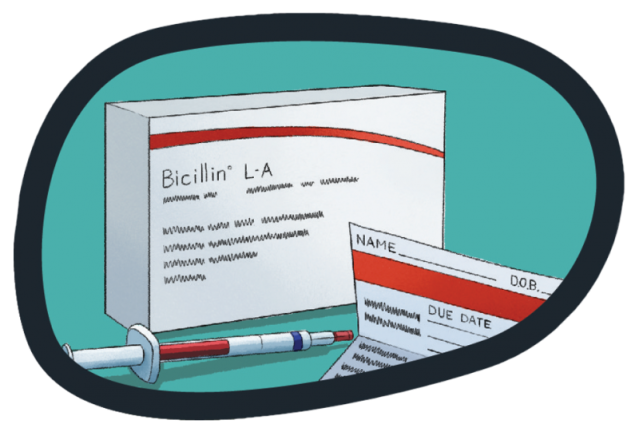How will my child’s rheumatic fever be managed?
Bicillin injections

To stop the strep germ from getting into the body and to prevent rheumatic fever from happening again, your child will need to have an injection of benzathine penicillin, also known as bicillin, every 21 to 28 days. You may hear healthcare professionals call this secondary prophylaxis.
The injection is given into a big muscle in the hip and bottom area. Even though this may hurt a bit, it is important that your child has it on time. If they are late, it increases their chance of rheumatic fever happening again.
How long will my child need to have bicillin injections?
Most people need bicillin injections for 10 years after the last rheumatic fever episode or until they are 21 years old (whichever is the longer period). Your health worker, nurse or doctor can tell you and your child more about the treatment. Your child’s rheumatic fever specialist will tell you when it is safe for them to stop having bicillin injections.
The Rheumatic Fever & Rheumatic Heart Disease Journey Introduction
Taking Care Of My Child's Health After A Diagnosis Of Rheumatic Fever
A Young Person's Rheumatic Fever & Rheumatic Heart Disease Journey - In Pictures
What Is Rheumatic Heart Disease?
How Will My Child’s Rheumatic Fever Be Managed? (You are here)
What Other Ways Can I Look After My Child's Health After Rheumatic Fever?
When Can My Child Return To Doing The Things They Enjoy After Rheumatic Fever?
Will My Child Need Regular Medical Check-ups After Rheumatic Fever?
Looking After My Child's Mouth & Gums After Rheumatic Fever
Will Rheumatic Fever Affect My Child’s Ability To Have Children In The Future?
Acknowledgements
This information is adapted from the rheumatic fever and rheumatic heart disease booklet produced by the Rheumatic Fever Project Team, Te Whatu Ora - Counties Manukau, 2022.
References
Rheumatic fever and rheumatic heart disease booklet (PDF, 9.94 MB). Te Whatu Ora - Counties Manukau, 2022.
